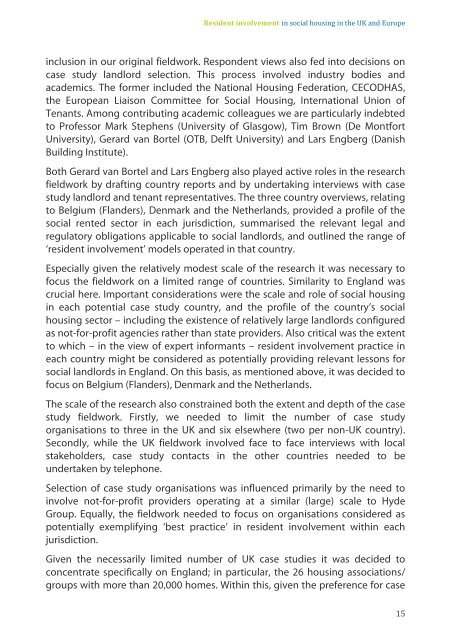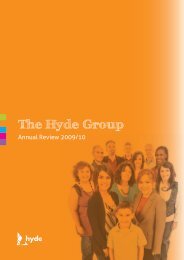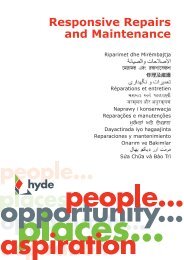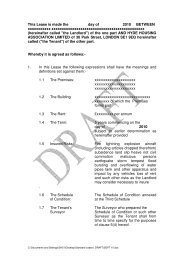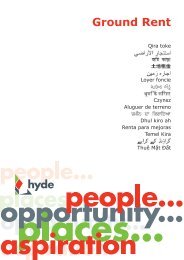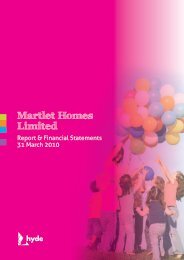Resident involvement - Hyde Housing Association
Resident involvement - Hyde Housing Association
Resident involvement - Hyde Housing Association
You also want an ePaper? Increase the reach of your titles
YUMPU automatically turns print PDFs into web optimized ePapers that Google loves.
<strong>Resident</strong> <strong>involvement</strong> in social housing in the UK and Europe<br />
inclusion in our original fieldwork. Respondent views also fed into decisions on<br />
case study landlord selection. This process involved industry bodies and<br />
academics. The former included the National <strong>Housing</strong> Federation, CECODHAS,<br />
the European Liaison Committee for Social <strong>Housing</strong>, International Union of<br />
Tenants. Among contributing academic colleagues we are particularly indebted<br />
to Professor Mark Stephens (University of Glasgow), Tim Brown (De Montfort<br />
University), Gerard van Bortel (OTB, Delft University) and Lars Engberg (Danish<br />
Building Institute).<br />
Both Gerard van Bortel and Lars Engberg also played active roles in the research<br />
fieldwork by drafting country reports and by undertaking interviews with case<br />
study landlord and tenant representatives. The three country overviews, relating<br />
to Belgium (Flanders), Denmark and the Netherlands, provided a profile of the<br />
social rented sector in each jurisdiction, summarised the relevant legal and<br />
regulatory obligations applicable to social landlords, and outlined the range of<br />
‘resident <strong>involvement</strong>’ models operated in that country.<br />
Especially given the relatively modest scale of the research it was necessary to<br />
focus the fieldwork on a limited range of countries. Similarity to England was<br />
crucial here. Important considerations were the scale and role of social housing<br />
in each potential case study country, and the profile of the country’s social<br />
housing sector – including the existence of relatively large landlords configured<br />
as not-for-profit agencies rather than state providers. Also critical was the extent<br />
to which – in the view of expert informants – resident <strong>involvement</strong> practice in<br />
each country might be considered as potentially providing relevant lessons for<br />
social landlords in England. On this basis, as mentioned above, it was decided to<br />
focus on Belgium (Flanders), Denmark and the Netherlands.<br />
The scale of the research also constrained both the extent and depth of the case<br />
study fieldwork. Firstly, we needed to limit the number of case study<br />
organisations to three in the UK and six elsewhere (two per non-UK country).<br />
Secondly, while the UK fieldwork involved face to face interviews with local<br />
stakeholders, case study contacts in the other countries needed to be<br />
undertaken by telephone.<br />
Selection of case study organisations was influenced primarily by the need to<br />
involve not-for-profit providers operating at a similar (large) scale to <strong>Hyde</strong><br />
Group. Equally, the fieldwork needed to focus on organisations considered as<br />
potentially exemplifying ‘best practice’ in resident <strong>involvement</strong> within each<br />
jurisdiction.<br />
Given the necessarily limited number of UK case studies it was decided to<br />
concentrate specifically on England; in particular, the 26 housing associations/<br />
groups with more than 20,000 homes. Within this, given the preference for case<br />
15


